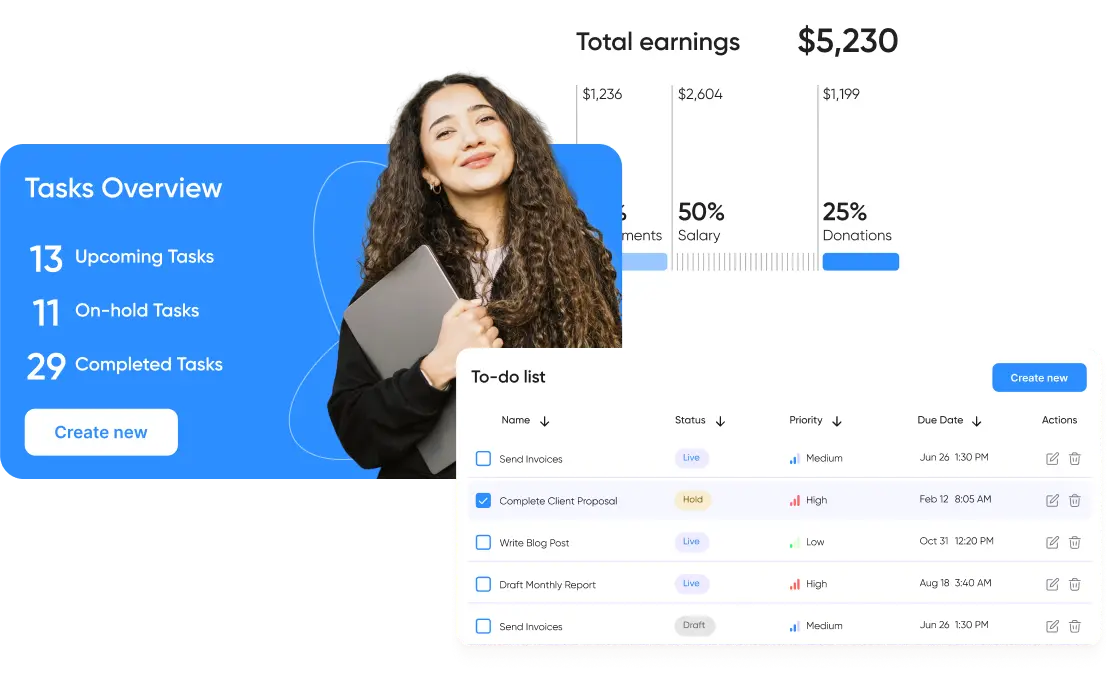Healthcare
Healthcare Procurement Solutions: From Chaos to Control with Expense Management Software
Healthcare procurement is critical for effective and efficient healthcare delivery. It involves sourcing, acquiring, and managing products, supplies, equipment, and services essential for healthcare organizations. Effective procurement ensures healthcare facilities have access to high-quality and cost-effective resources that meet the highest standards of patient care.
However, the complexity of the healthcare procurement process can pose many challenges, including limited supplier options, high costs, and compliance issues.
What if healthcare companies can avoid all procurement challenges through the power of healthcare procurement solutions?
With expense management software — a powerful tool for cost management functionality — procurement transforms from a cumbersome and manual process to a streamlined and efficient system.
In this article, we delve into how this innovative technology can streamline processes, optimize decision-making, and transform challenges into success opportunities.
Healthcare Procurement Solutions: How to Streamline Healthcare Procurement with Expense Management Software?
The landscape of healthcare procurement is constantly evolving, driven by new trends and best practices in the global market. The emerging trends aim to reshape the way healthcare providers approach procurement.
What is trending in healthcare procurement solutions?
- Technological advancements: From artificial intelligence (AI) and machine learning (ML) to robotic process automation (RPA), these tools streamline procurement operations, enhance data analytics capabilities, and enable organizations to make data-driven decisions with unprecedented speed and accuracy.
- Cost reduction through automation: Healthcare providers leverage automation and analytics to optimize procurement processes, leading to cost savings and improved efficiency.
- Value-based procurement: This approach emphasizes outcomes, quality, and patient-centered care. By aligning procurement strategies with patient needs and clinical outcomes, organizations can maximize value while maintaining cost-efficiency.
- Predictive analytics: Analyzing data and patterns helps organizations forecast demand, optimize inventory levels, and minimize supply chain disruptions. This proactive approach improves efficiency and reduces costs while ensuring the availability of critical supplies.
- Supplier collaboration platforms: The traditional buyer-supplier relationship transforms into a collaborative partnership. By fostering closer relationships with suppliers, healthcare organizations can enhance product quality, negotiate favorable terms, and drive innovation within the supply chain.
- Supply chain resilience: As the COVID-19 pandemic exposed vulnerabilities in healthcare supply chains, providers focused more on building procurement resilience strategies. This includes diversifying supplier networks, implementing contingency plans, and adopting agile procurement strategies to quickly adapt to unforeseen disruptions.
- Sustainability and social responsibility: A top priority for many providers is a commitment to ethical and sustainable practices. From environmentally friendly product choices to responsible waste management and fair labor practices, sustainable procurement aims to minimize the industry's ecological footprint and promote social responsibility.
Top 7 Challenges of Procurement in Healthcare
In response to unprecedented procurement issues caused by the COVID-19 pandemic, providers concentrated on the importance of effective risk management and resilience.
However, several challenges stand in the way of achieving these goals:
Lack of procurement standardization
The absence of procurement standardization leads to multiple inefficiencies and inconsistencies, but more importantly, it may result in up to 30% higher costs. Healthcare companies struggle to establish clear guidelines and best practices, resulting in fragmented workflows and missed optimization opportunities.
A cohesive framework and standardized procurement protocols can streamline your operations, enhance transparency, and facilitate better collaboration across departments.
Compliance tracking and management difficulties
Compliance in healthcare procurement involves adhering to regulatory requirements and industry standards, but it can be challenging due to complex regulations and evolving policies.
Organizations must stay updated, monitor compliance across multiple suppliers, and mitigate the risk of non-compliance. Fortunately, automation is a solution to go for. Automated systems minimize the risk of regulatory violations and ensure adherence to necessary standards. Also, it streamlines compliance tracking and management, providing a more efficient and reliable approach to navigating healthcare regulations.
Cost optimization while ensuring quality and safety
Balancing cost optimization with quality and safety is a critical challenge in healthcare procurement. Organizations must strive to find cost-effective solutions without compromising patient care and safety standards. The complexity lies in evaluating the total cost of ownership, including maintenance, training, and potential risks associated with cheaper alternatives.
By leveraging advanced analytics and data-driven insights, organizations can make informed decisions, identify cost-saving opportunities, and optimize procurement strategies while upholding quality and safety standards.
Complex approval processes and workload
Healthcare procurement encompasses multiple stakeholders, intricate approval hierarchies, and time-consuming decision-making processes. These complexities often lead to delays, increased workload, and frustration within procurement teams.
Streamlining approval processes, automating tasks, and using workflow management tools can simplify the procurement journey. This reduces administrative burden, ensures seamless collaboration, and accelerates cycles, resulting in improved operational efficiency.
Fragmented communication channels
Fragmented communication channels can impede collaboration, create information silos, and result in misunderstandings. Maintaining clear and transparent communication becomes a big challenge with multiple platforms and manual processes.
Adopting procurement management software leads to better collaboration, higher transparency, and faster information sharing across departments.
Limited visibility into spending
Healthcare organizations often struggle with limited visibility into their spending patterns. It hinders their ability to identify cost-saving opportunities, track budget utilization, and optimize procurement strategies. Without comprehensive spending analysis, organizations miss out on valuable insights that can drive informed decision-making and strategic sourcing.
Implementing robust spend analytics solutions empowers organizations to gain real-time spending visibility, identify overspending or potential savings areas, and make data-driven procurement decisions.
Limited supplier options/availability
The healthcare industry relies on diverse suppliers and vendors to meet its procurement needs, but limited options and availability often pose challenges in finding reliable and cost-effective partners. This can result in higher costs, compromised quality, and difficulties in sourcing critical supplies.
By leveraging digital procurement platforms and cultivating strong supplier relationships, organizations can expand their network, enhance competition, and ensure a consistent supply chain.
To summarize, procurement in the healthcare industry suffers from a lack of standardization, compliance tracking difficulties, and the delicate balance between cost optimization and quality/safety. Luckily, addressing healthcare procurement challenges is easier with tools for automation and advanced analytics solutions.
The Power Healthcare Procurement Solutions
There are many reasons why expense management software is critical for healthcare providers. One of them is a comprehensive set of functionality designed to leverage procurement processes.
How can software in healthcare procurement eliminate existing challenges and reduce the burden of manual processes for healthcare providers?
Process Standardization for Improved Efficiency
Standardization establishes consistent workflow and reduces manual errors. Automated purchase requisitions and approvals minimize delays, which enables healthcare providers to achieve greater efficiency and timely delivery of essential resources.
With the power of software solutions, healthcare procurement can transcend the limitations of manual processes. This means providers can focus on delivering exceptional patient care and driving overall operational excellence.
Real-time Spending Visibility for Cost Savings
One of the key benefits of expense management software is its ability to provide real-time spending visibility. With detailed analytics and reporting capabilities, organizations can track and analyze their spending patterns.
Data-driven business decisions enable proactive cost management, identify areas of overspending, and uncover potential cost-saving opportunities. By having a clear view of their financial data, healthcare organizations can make smarter decisions and optimize their procurement strategies based on their data indicators.
Customized Reporting for Spending Optimization
Expense management software (aka healthcare procurement software) empowers healthcare procurement with customized reporting capabilities with tailored insights to their specific needs. Detailed reports on spending categories, supplier performance, and compliance metrics enable data-driven decision-making, negotiation with suppliers, and optimized spending.
With accurate insights, healthcare organizations can strategically allocate resources and drive efficiency in procurement operations.
Seamless System Integration for Accuracy
Custom expense management software will seamlessly integrate with existing systems like ERP and EHR. This ensures accurate data exchange and eliminates duplicate data entry. This integration enhances data integrity and maintains a unified and up-to-date database.
With improved accuracy in procurement processes, healthcare organizations can make informed decisions and streamline operations for optimal efficiency.
Regulatory Compliance and Penalty Avoidance
Compliance with healthcare regulations and industry standards is of utmost importance in procurement. With features like automated supplier credential validation, contract management, and audit trails, the software helps organizations meet healthcare regulations and industry standards.
By adhering to compliance requirements, healthcare organizations can avoid penalties, mitigate risks, and maintain a strong reputation.
Risk Management Features for Minimizing Loss
Risk management is a fundamental aspect of healthcare procurement, and expense management software offers valuable tools to address this challenge. With features like risk assessment, supplier performance monitoring, and contract management, the software enables organizations to identify and mitigate potential risks.
Whether it's supply chain disruptions, quality issues, or supplier non-compliance, the software helps healthcare providers manage risks to minimize losses and ensure continuity of operations.
Centralized Communication for Better Collaboration
Efficient and transparent communication is the cornerstone of successful procurement in the healthcare industry. With good software, providers can build centralized communication platforms that facilitate stakeholder collaboration.
From communicating with suppliers to coordinating approvals with internal teams, the software streamlines communication channels and ensures clear and transparent information exchange. This fosters better collaboration, reduces errors, and enhances overall procurement effectiveness.
Stronger Supplier Relationships for Better Value
Expense management software empowers organizations to effectively manage supplier contracts, track performance, and evaluate vendor relationships. With consolidated supplier data and performance metrics, organizations can identify top-performing suppliers, negotiate better contracts, and drive value for money.
Building stronger supplier relationships leads to improved cost-effectiveness and enhanced overall procurement outcomes.
Ongoing Maintenance and Support for Continuous Optimization
Implementing custom expense management software is not a one-time solution. It requires continuous maintenance and support to ensure optimal performance.
Software IT vendors like ElifTech provide ongoing updates, training, and technical support to address evolving needs and challenges. This ensures that healthcare organizations can continuously optimize their procurement processes and adapt to changing industry demands.
Building Expense Management Software with an IT Vendor
When it comes to developing custom expense management software for healthcare procurement, partnering with an experienced IT vendor like ElifTech can make all the difference.
By outsourcing software development to a specialized IT company, you acquire a team of software experts with in-depth knowledge and experience in healthcare projects.
Compared to the in-house dev team, IT vendors with relevant experience can:
- spot valuable tech trends for the healthcare industry;
- understand the intricacies of procurement processes;
- know the ins & outs of successful project management.
By choosing ElifTech as your IT vendor, you invest in the following:
- 8-year experience and 200+ completed projects for clients around the world;
- skilled full-cycle team with 100 professionals (developers, designers, project managers, etc.) in a wide range of technologies;
- client-centered approach to be aware of each development stage;
- agile development allowing us to quickly respond to changes in project scope, budget, and timeline;
- quality assurance to ensure the highest standard of work;
- transparent communication with regular updates on project progress. With a proven record of healthcare software development, ElifTech can take your procurement optimization to the next level.
Contact us to learn the details of the collaboration.
Browse our case studies and get actionable insights to drive your success
See more
